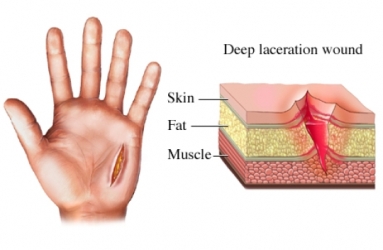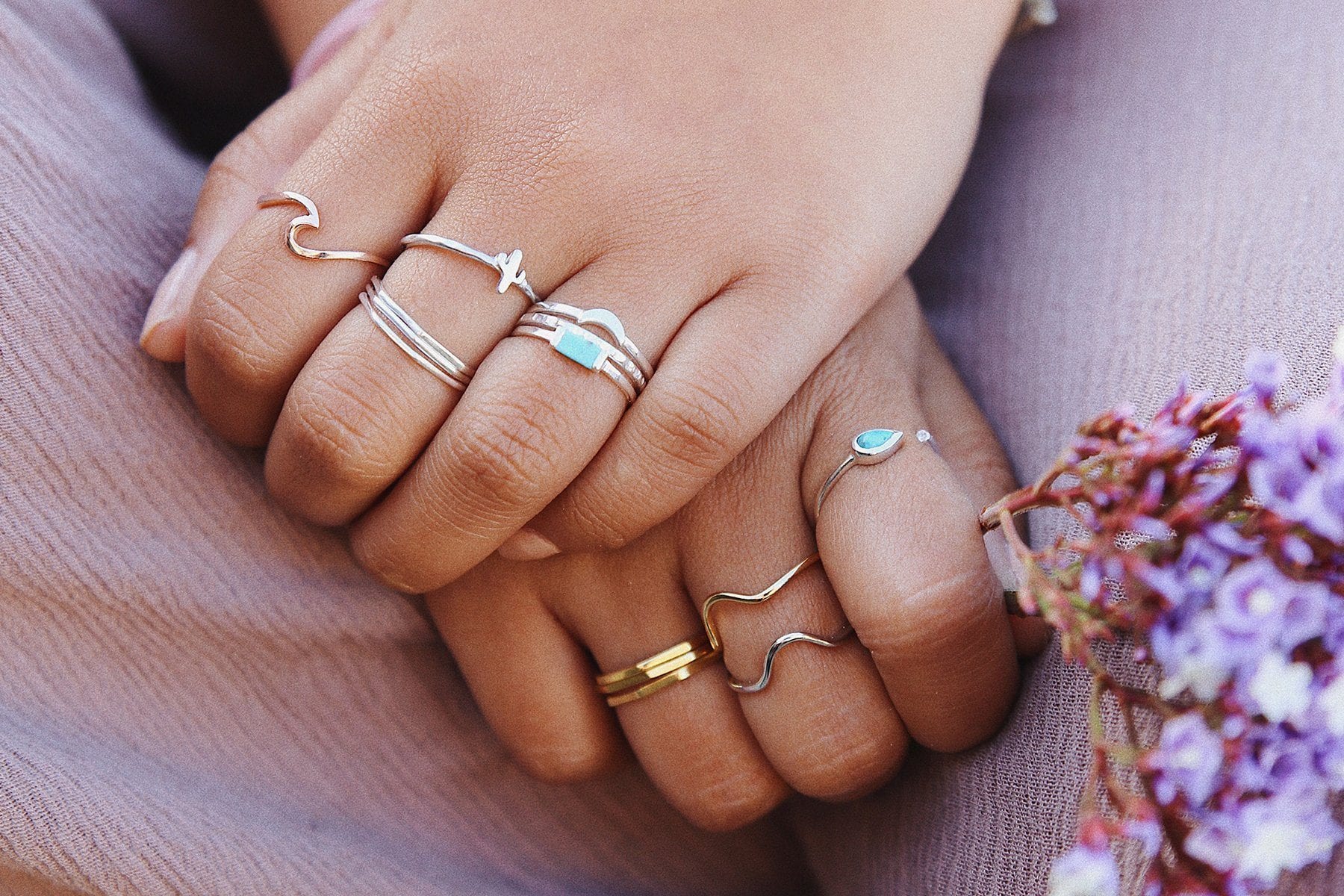How to treat cuts? Wash the cut with soap and running water for at least 10 minutes. If you notice infection, go to a doctor. Step 2: Apply an antiseptic liquid such as hydrogen peroxide or iodine to prevent infection. Step 3: Apply pressure to stop bleeding, keeping the wound elevated whenever possible while elevating your arm above heart level.Step 4: Bandage loosely over the wound wrapping more gauze as needed until bleeding stops; secure with tape. The bandage should always be loose enough to allow easy circulation to the damaged area.
How to treat cuts
After you make the initial incision, clean the wound with soap and water and blot away any excess fluid. Dry the cut with a clean towel, then apply ointment or a bandage to keep out dirt and germs.
You can help reduce the risk of infection and scarring by washing your hands with soap and water before treating cuts. Also, rinse the cut area with warm water to remove any dirt.
Cuts are common and can happen to anyone, but knowing how to treat a cut properly is important for preventing infection and allowing it to heal quickly. The best way to treat cuts is to wash with soap and water. Cleaning a cut prevents infection from spreading, so make sure you clean the wound in a sink, not the bathroom sink or on your countertop.
how to treat a cut wound

How to treat cuts? To treat a cut, wash your hands and the area around the cut. Be sure to clean any dirt or debris from the wound. Wash the wound with soap and water from a safe source, such as tap water. If available, apply an antiseptic to the area. Use sterile gauze (such as cotton) or paper towel to cover the cut. Cover it with a bandage if possible; otherwise, wrap it with a cloth or paper towel and secure it with tape. Change the dressing every half hour until there is no longer any bleeding.
Read More : how to treat pimples
The most important thing to remember when treating a cut is not to touch the surrounding area. This can make an otherwise minor cut worse, and can cause infections. The next most important thing is to make sure your wound is properly cleaned in order to prevent infection from occurring.
How to treat cuts? Cuts and wounds can range from very minor to severe. If a cut is deep enough, it can become infected and should be cleaned and dressed immediately. Some cuts can also leave permanent scars if they’re not cleaned properly or covered by a wound dressing. Follow these steps to help care for any cut or wound: Washing your hands with soap and water before treating any wound helps prevent you from spreading germs and infection. Sterilize your equipment with either an antiseptic solution or rubbing alcohol so that nothing interferes with healing.
To treat a cut wound, first stop the bleeding by applying pressure to the area. Then clean the wound with soap and water, or an antiseptic solution. Cover the area with a bandage or gauze pad until it heals. If a scab forms over the site of your wound and prevents it from healing properly, use petroleum jelly to soften the scab so that it can be removed gently.”
best way to treat a cut

How to treat cuts? When your child has a cut, there are steps you can take to protect them from infection and other complications. Use an antibiotic ointment like Polysporin, drain the cut and clean it with soap and water, then apply a bandage or steri-strip if needed
How to treat cuts? If you have a cut that is minor and clean, you can use an antiseptic spray to disinfect the area. For larger wounds and especially deep cuts, it’s important to make sure that the bleeding stops immediately. Pack a sterile gauze pad over the wound: It will stop the bleeding and protect the skin from infection by creating a barrier between your wound and your hands or whatever else comes in contact with it.
how to treat cuts on face

First, assess the cut. The location and depth of the cut will help you determine the level of risk involved in treating it yourself.
How to treat cuts? When dealing with cuts on the face, there are a few things to keep in mind. The first being that if the cut is on your cheeks or forehead, and any part of it touches your teeth, it will probably bleed profusely. This is due to the proximity of blood vessels and nerves in that part of your face, so please be careful when speaking or eating. For easy treatment, put pressure on the cut with a clean cloth or gauze immediately after it has happened.
Your face, head and neck are some of your most important assets. To maintain those assets in optimum condition, you must take care of them. When cuts happen on your face, they can be very unpleasant and difficult to manage. If you do not treat a cut correctly it can cause serious damage to the skin and delay healing. Here is how to treat cuts on your face: Wash Cut With COLD Water Rinse the blade of blood using cold water before rinsing with warm water.
what can you put on cuts
How to treat cuts? make sure the cut is clean and dry; apply a thick layer of Neosporin or other antibiotic ointment; cover with a nonstick bandage to keep out dust and germs; change the bandage twice a day.
How to treat cuts? First, you should clean the wound by washing it with soap and water. Afterwards, you can use an anti-bacterial cream or lotion to reduce the chance of infection. Finally, cover the cut with a bandage or dressing.
How to treat cuts? There are many things you can do to help your cuts heal quicker. You should wash the area and then use some sort of antibiotic ointment on top of your cut. Make sure to change it daily in order to keep it clean. It also helps to put clean gauze on it and then wrap an ace bandage around the whole thing so that you don’t really have to mess with it again.
What’s the best thing to put on cuts? Unfortunately, there isn’t one surefire answer. There are a number of things that can help though. Some of them fight infection, others promote healing, and still others numb the pain.How to treat cuts? Here we review the most common options and provide you with some tips for choosing what to use
best way to treat cuts and scrapes

If you have a cut or wound, clean it and apply antiseptic cream to prevent infection. If the cut is fairly small, use some clear tape to hold gauze dressing in place.
How to treat cuts? Protect cuts and scrapes with a wrap, bandage, and petroleum jelly. For severe cuts and lacerations, go straight to the emergency room.
How to treat cuts? For minor cuts, scrapes, and burns, go for this first-aid trick to soothe and protect the affected area.Use your clean index finger or thumb to apply a light amount of petroleum jelly to the wound, starting at the deepest point and working your way out. This locks in moisture and protects the injured area from further contamination.Your skin will thank you with less redness, swelling and pain.
How to treat cuts? Cuts and scrapes are rarely dangerous, but they can be very painful and inconvenient. When your skin breaks, a wound forms that releases chemicals that trigger inflammation and cause damage around the site of injury. If left untreated, a cut or scrape can become infected with bacteria that causes further damage to the skin or even spread throughout your body. Bleeding, swelling and pain are all signs of a potentially serious injury that requires proper attention. There are several ways other than stitches to bind up a cut in order to stop bleeding and begin the healing process
Cuts and scrapes can be painful, itchy and unattractive.How to treat cuts? Our products are designed to help heal your skin quickly, keep it moist and free of bacteria, giving you relief from itching and burning.
How to treat cuts? The best way to treat cuts and scrapes is with a first aid kit. It will include everything you need to stop bleeding, cleanse the wound and cover it up until you can see a doctor. If you can’t get to a store for the essentials, see below for alternative options
how to treat cuts first aid

A cut is an injury to the skin caused by a sharp object cutting or tearing it. Cuts often bleed a lot, particularly because as blood vessels are severed, the blood pressure inside them drops, so when they reopen, the blood inside moves quickly out of the vessel and into the surrounding tissue.
When it comes to how to treat a cut wound, there are several crucial steps you need to take in order to treat the injury properly. These include applying pressure and/or ice, cleansing the site with antibacterial soap, elevating the limb and approaching the wound with sterilization prior to bandaging.
How to treat cuts? Minor cuts, scrapes and punctures are common accidents that happen to everyone at some point in life. Even with the best of intentions, accidents can happen that result in a little bleeding and pain. You are able to treat most minor wounds with simple first aid techniques, keeping them clean and covered until you receive medical treatment or help from another person.
Taking care of cuts is important. You can use first aid for cuts to reduce your risk of infection and help your wound heal quickly. Wash your hands with soap, warm water and lots of lather.






More Stories
Protein on a Budget: Best Affordable Drinks in 2025
Go Green: Top-Rated Plant-Based Protein Drinks
Arthroscopy Implants Then and Now: A Journey Through Innovation